Music Theory Resoucers, Uncategorized
Standing on the Dominant
The standing on the dominant is:
A postcadential phrase function following a half cadence. It may also follow a perfect authentic cadence at the end of a small ternary exposition to initiate a contrasting middle. It consists of one or more ideas supported exclusively by a dominant prolongation.
,
William Caplin – Classical Form
,
A postcadential standing on the dominant can be seen after any half cadence with the exception of the half-cadence at the end of an antecedent in a period theme.
It brings the “progressing” dynamic energy associated with “ending” on the dominant.
,,,,USES,,
– At the End of a Compound Sentence
The standing on the dominant is quite frequently used at the end of a compound sentence and quite rarely at the end of a simple sentence. The idea behind using it at the end of a compound sentence is to reinforce the arrival of the dominant.
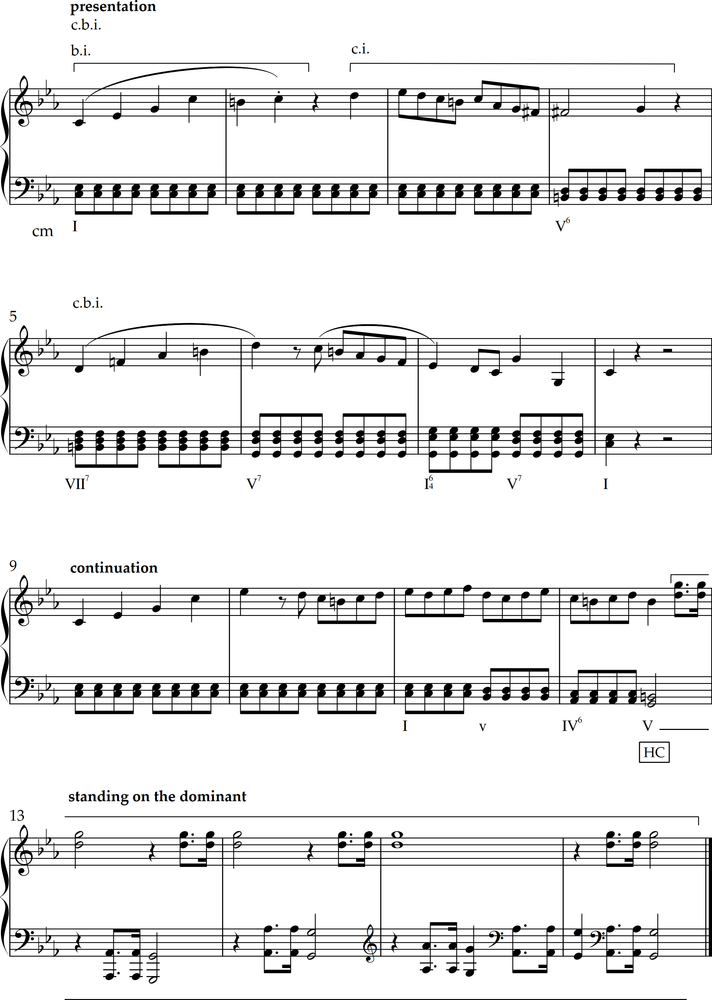
It can use fragmentation and repetition.
There is no cadence associated with a Standing on the Dominant as there is no harmonic progression associated with it either.
It can be structured as a series of repeated bar-units.
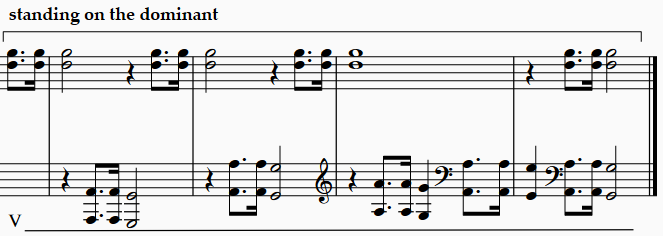
– As a “Contrasting Middle” “B”
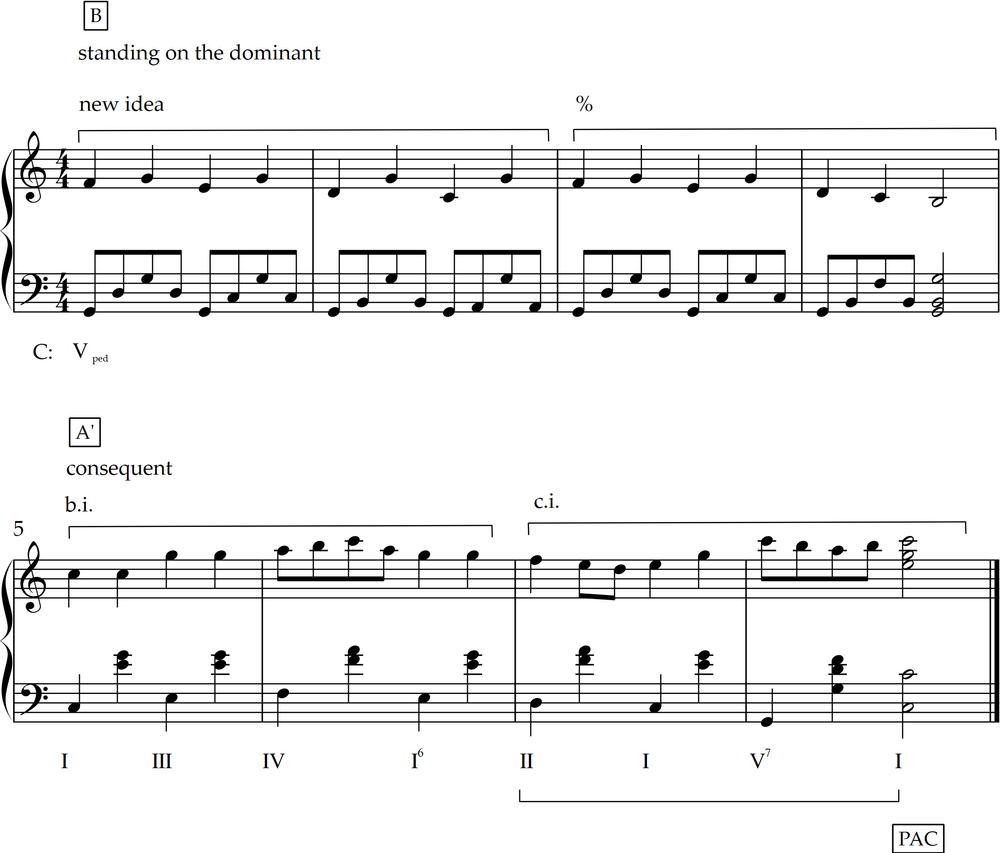
When used for “B” they normally consist of a 2m new basic idea (b.i.) that is repeated. This type of B can be lengthened by means of fragmenting the b.i.
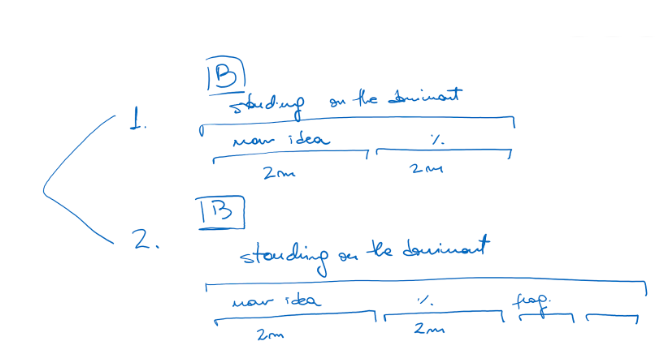
The Standing on the Dominant can comprise a series of varied statements.

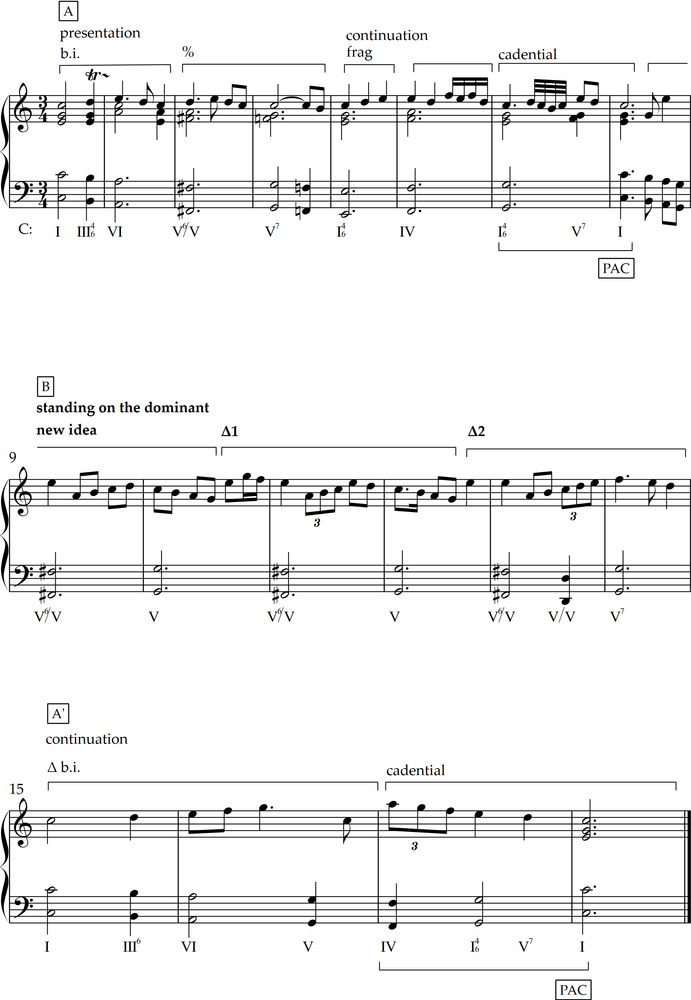
– Postcadential of “B”

This use facilitates the “clearing of the stage” which helps to create anticipation for the return of the main theme “A’” in a small ternary for example.
Two devices are used to help recapitulation:
- Textural dissolution – the melodic line slims down to a single voice –
- Motives from the upcoming section used as “new ideas”
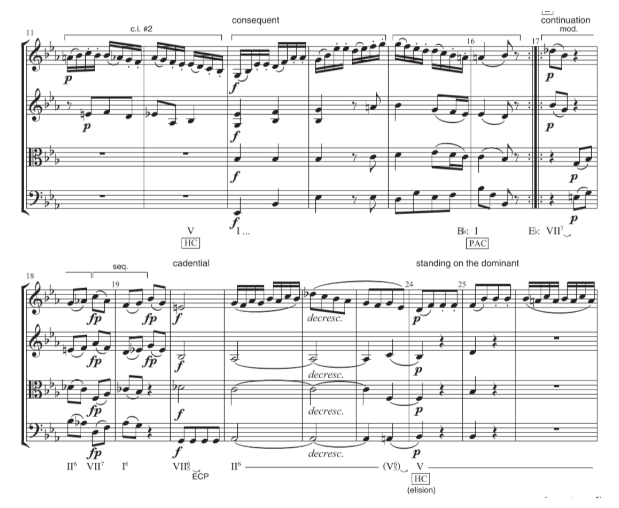
The above is an eliding example.
The Standing on the Dominant may or may not elide with a HALF CADENCE -HC- but can never elide with a PERFECT AUTHENTIC CADENCE -PAC-.
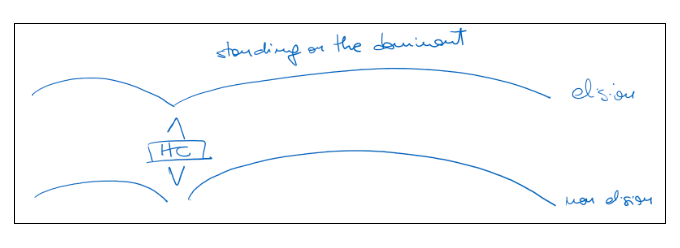
———————
NOTE: The harmonic progression and the ,,music syntaxis should be aligned to talk about a cadence.
HALF CADENCE
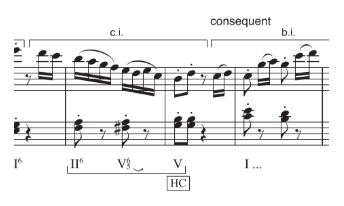
In spite of the fact that the “V” is succeeded by the “I” the syntax of the melodic line indicates an ending in the “V” and a beginning in the “I” at the following bar.
PERFECT AUTHENTIC CADENCE
As opposed to the above, in this next example, the syntactic ending of the phrase coincides with the ending of the harmonic progression as well.
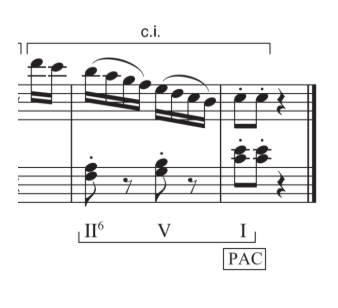
Don’t confuse HC with the end of presentation or antecedent, a HC could very well be the end of a sentence.
Conceptually there is a big difference between a Standing on the Dominant and a Dominant Prolongation. “Dominant prolongation” is the name we use to describe a harmonic progression while a “Standing on the Dominant” refers to a formal function.
Closing Section vs. Standing on the Dominant
It is very similar to a closing section. The main difference is that the standing-on-the-dominant has to be supported by a prolongation of the dominant and needs to happen after an “HC”. The closing section needs to happen after a “PAC”
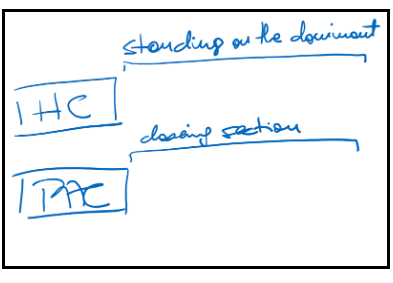
Dominant Emphasis vs. Standing on the Dominant
We shouldn’t confuse an emphasis on the dominant with a Standing on the Dominant.
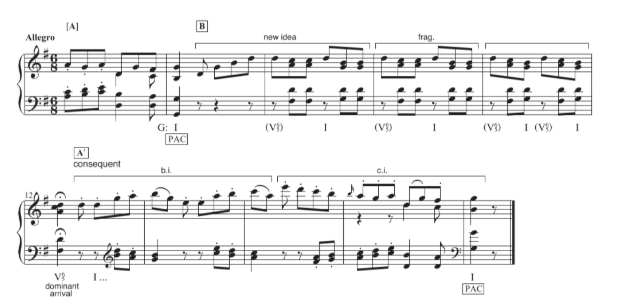
In the above example, there is NO “Standing on the Dominant” but an emphasis on the dominant. The latter due to the tendency of the repeated “V” to resolve on the “I”.
For further clarification please check our masterclass on “Standing on the Dominant”

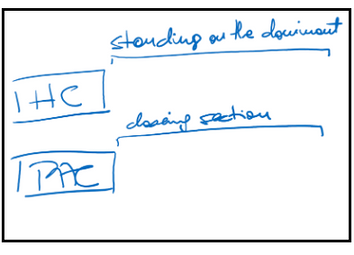
Pingback: Types of Harmonic Progressions